When Donald Trump won in 2016, Americans took to the streets in unprecedented numbers. What will we do this year if Trump refuses to accept defeat — something half of all Americans currently fear?
According to George Lakey, a highly-respected organizer and trainer whose impressive activist resume dates back to the civil rights movement, “We don’t want large mass demonstrations and everybody going to Washington.” That type of action, Lakey argues, can help spark social change, but it’s not up to the task of stopping a coup — which is what it would be if Trump refused to accept a loss and a peaceful transfer of power.
“This is a different game that we simply haven’t experienced in the United States,” Lakey says. “The game we need to play focuses not on one particular foe, but rather the people who favor the stability of the system for the longer run. And we can learn it by studying those who have experienced a coup and won.”
Previous Coverage
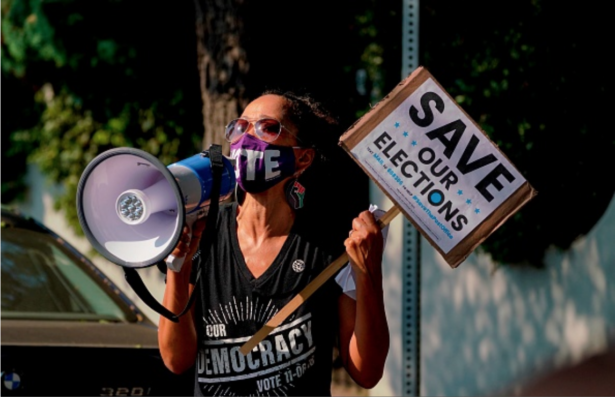 Mass direct action might be the only way to stop Trump from stealing the election
Mass direct action might be the only way to stop Trump from stealing the electionFor the past few months — ever since Trump started building his case for rejecting election results — Lakey has been hard at work getting Americans up to speed. In a series of articles for Waging Nonviolence, he’s discussed leading anti-coup research, how to win over the political center and one strategy that could be easily deployed across the country.
At the same time, he’s joined with other experienced trainers to launch a new group called Choose Democracy, which is preparing people to defend against a coup. In just a matter of weeks, over 25,000 people have signed their pledge of resistance. Meanwhile, 3,300 have taken their “How to Beat an Election-Related Power Grab” online training. With demand continuing to grow, they could be training as many as 5,000 people a week through the election.
Yet, for all this excitement and eagerness to stop a coup, Lakey and his fellow trainers are also hearing people express a lot of fear — specifically for their safety. “One of the most frequent questions we get in our early trainings is: How do we protect ourselves against violent repression, whether from law enforcement or the right-wing?”
While it’s touched upon in the trainings, there typically isn’t enough time to go into the kind of depths Lakey has explored over the years in Waging Nonviolence. So, we decided to have a conversation, where he could share some of his favorite stories and strategies for taking precaution, while also taking direct action. [Our full archive on this subject is available here.]
So, getting right to it, what do you tell someone who is worried about facing violent opposition?
Previous Coverage
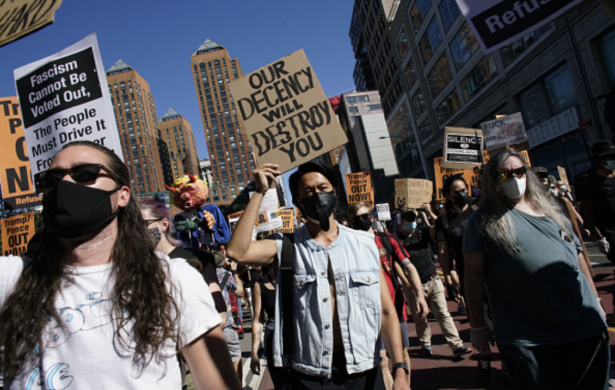 What will it take to defend the election? Here’s one winning strategy
What will it take to defend the election? Here’s one winning strategyThere are a number of things we can do that minimize the chance that violence will come at us. Not [eliminate] the chance, just minimize. One thing is to choose tactics that make it harder for them to attack us. For example, there’s the strategy that I offered in Waging Nonviolence of going after elected officials and demanding that they insist on every vote being counted and that they state it publicly.
How do we go after them? Well, we could go after them in a big rally outside their office building. But a big rally is kind of tempting for anybody who wants to rumble. So, instead, we can do a car caravan passing their homes and we can go to their church, synagogue, mosque or wherever they worship. We can send small teams into their office and do a sit-in. We can organize that in ways that minimize the risk of COVID.
The idea is to keep coming up with tactics that are taking place in a particular place or are organized in such a way as to make it harder [for them to use violence]. We do it with bands playing, with majorettes, whatever it takes to not be the bait in front of Pavolv’s dog.
You have described fear as “a story that we make up.” Explain what you mean by that.
Previous Coverage
 Ingredients for building courage
Ingredients for building courageIt helps me to realize that my fear is Fantisized Expectations Appearing Real. Because I realize it’s all about what might happen, not what is certain to happen. So it’s a fantasy in my mind — and it may happen or it may not. I need to act on the basis of reality, not on my fantasy about what could happen.
Another big thing I can do is notice my body, that it’s charged up when I’m feeling fear, that lots of energy is available. I can decide that that’s a good thing. I can press the button that switches that from fear to excitement. Ever since a concert pianist told me that I’ve been telling myself [things like] “You are so ready. You’re on it. This is exciting. This is a story you will tell your grandchildren.” Reframing is magical, but you may need practice doing that. You may not be successful the first time.
One thing many people are afraid of is conflict — particularly those of us with comfortable, middle-class lives. What’s one strategy for overcoming that aversion?
You see two people arguing — great, get closer. If that’s taking two steps closer, good for you. If it is taking four steps closer, awesome. Absolutely celebrate each one of these ways that you are putting yourself in training because we can actually recondition ourselves and change [our relationship to conflict].
There was a guy who worked with Dr. King on his national staff who happened to have claustrophobia. And so when they were getting ready for the next campaign, he would spend time in a closet every day to prepare for spending time in a jail cell. For him, that was way, way bigger than for most people who didn’t suffer from claustrophobia. So he would do this de-conditioning in order to get ready.
You’ve written about this idea of “moving closer to conflict,” and how it can even help a situation from turning violent.
Previous Coverage
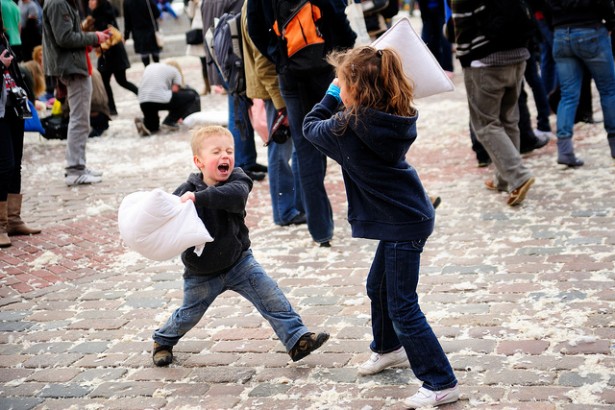 Defense on the streets — stepping into conflict
Defense on the streets — stepping into conflictAbsolutely. A former student called me out of the blue and told me that he, just the other day, did exactly that. He took steps closer to what looked like a guy getting prepared to beat up a woman across the street because he had read the article in Waging Nonviolence, where I describe helping a woman in distress by simply yelling at her would-be attacker from my porch, until others more brave than me came to her rescue. This former student did the same thing. He took steps closer and stared at the couple, but didn’t feel courageous enough to say anything. As he stood there, though, two people saw what he was doing and joined him. So then there were three of them lined up on the sidewalk, watching this conflict just across the street. So finally, this former student finds his voice because of solidarity — that’s another big ingredient — and says, “We’re watching you!” Which is what I said in my story, and it worked!
Now, of course, you don’t want to move toward conflict every time. There are times when you wouldn’t want to do that, because it would be dangerous. This reconditioning exercise isn’t an invitation to endanger oneself.
What about when you don’t have the choice to move toward conflict? What do you do when you are in the middle of it?
I’ve been looking for peacekeepers around the country [who point to what we can do in these situations]. Rita Archibald is one of them. She lives in Chicago, and she has become a very effective peacekeeper in demonstrations that become turbulent. She got started one day when she happened to be near the front of a large mass of demonstrators who were being blocked by a large mass of police. They had occupied the street. And the very front line of demonstrators was a bunch of young men who were yelling taunts at the police and escalating.
She had no idea what to do, and then she thought, “Well, I could at least do something. It’s more important to do something than nothing.” So she went to a couple of people that were right behind the guys who were yelling and said, “Excuse me, would you mind moving back a little bit? I think they need a little space. Let’s give them a little space.” And the people readily did it because in situations of conflict people are very open to suggestions. And so they moved back, and she thought, “That was easy.” So she did it again. She kept inviting people to move back. And when they reached a certain point where there was an actual visible distance between the second line and the first line, the guys calmed down and de-escalated because they didn’t feel the support.
You’ve also talked about the importance of refusing to accept an attacker’s script. Why is that another important strategy for de-escalation?
Previous Coverage
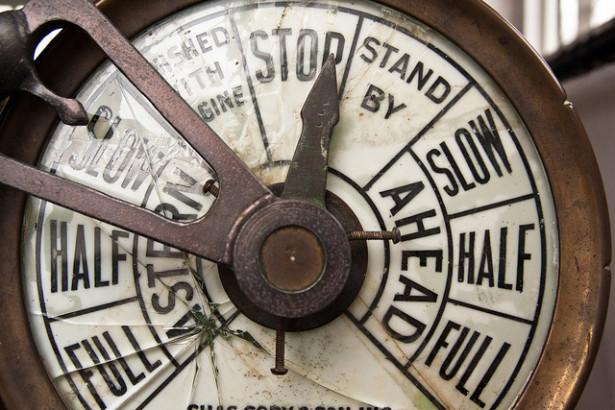 Re-writing an attacker’s script — getting in practice
Re-writing an attacker’s script — getting in practiceWell, they often expect immediate pushback from you and are really surprised when they don’t get it, which can give you a margin of safety. The most dramatic way that you can not push back is to just sit down. I first learned about that in France in the early ‘60s when I was talking to French activists who were involved with the movement against the French Empire’s presence in Algeria. They told me the best way to respond when the police are charging you is to just sit down. A year later, I found out that was also standard practice on the part of the Southern Christian Leadership Conference and others in the civil rights movements in the South.
When I talked with Rev. Andrew Young about it, he said, “You probably figured that we preachers are always having people get down on their knees because they need to pray for God’s intervention, and that’ll save them. Well, prayer is a good thing to do. But the main thing to remember is if you get people on their knees, the police are more likely to back off. Or at least not hit people. Whereas if you keep them on their feet, they’re much more likely to get hurt.” So I realized that’s two very different cultures [using the sit-down technique].
We are talking about something that is way deeper than words and concepts. This is primal. This is sub-verbal. This is a kind of language of gesture. This is in the realm of body stuff. Dancers understand this better than we do. But it seems like in multiple cultures, that’s what happens when people sit down.
That’s interesting because you often hear — talking about a primal kind of feeling — fight or flight.
This is neither. This is a direct contradiction to that bifurcation.
And the flight response can be more damaging.
Way more. As Andrew Young also said, “If they’re on their feet, they’re more likely to run. And if they run, they get chased and they get really slaughtered.” We saw in Chicago in 1968 police chasing people into the Hilton Hotel, clubbing them and they’re bleeding all over the Hilton rugs. Running is a terrible, terrible thing to do, which is, again, contrary to this primal fight or flight thing.
On the other hand, tear gas is something else. When a big number of Black Lives Matter activists found themselves occupying an interstate that runs through Philadelphia this summer, and the police decided to get them out of there with tear gas, some friends of mine had the presence of mind to put their arms in the air and very slowly start walking away from the tear gas. At the same time, they chanted together, “Slowly, walk, slowly, walk, slowly, walk.” They were demonstrating the way to do it and saying it very loudly. More people picked it up, and in that part of the crowd there were no injuries. Whereas in the other parts of the crowd, where people simply ran, there were injuries.
Have you ever experienced this dynamic yourself?
In North Philly, a huge demonstration of Black people in a Black neighborhood were furious that white construction workers had been hired to build a new school for Black children. And so the whole block was full. At the far end of the block was the school construction site, and people had arrived early to block the workers from entering the site. Police, meanwhile, were there to make sure that workers could enter the site. I came a little late and was in the middle of the block.
Previous Coverage
 How a neighborhood in Philadelphia learned that real safety lies in solidarity
How a neighborhood in Philadelphia learned that real safety lies in solidarityNow, I had forgotten another rule for safety: Go with a buddy or go with an affinity group. Shame on me. So there I was, by myself. But whenever I’m by myself in a demonstration, or even when I’m with somebody, I look around. What are the resources around me? I spy another guy who looks like his head is screwed on right. So I eye him. He eyes me. He’s scoping the ground too. But we don’t get to talk. We just know where we are. And then the construction workers arrive in buses. So they’re being unloaded at the end of the block. We can’t even see that. I just know that’s what’s going on because there’s an enormous roar at that end of the block. The other end of the block hears that roar and wants to rush to the scene. So they start running, and I’m seeing a riot in my head. So I look at the guy. The guy looks at me. I reach out my hand. He reaches his out. We grab hands like crazy, and we stretch out our other arms and we stop the stampede.
Just the two of you?
Yes, because crowds are so suggestible. It’s amazing. It’s also frightening how suggestible they are. But anyway, it wasn’t a physical blockade. Just, you know, us looking very determined. So, yeah, we held people back. Scoping out other people where you are is a good thing.
Discipline is frequently cited as one of the keys to successful nonviolent action. You’ve also said that it can be a deterrent to violence. Why is that?
Previous Coverage
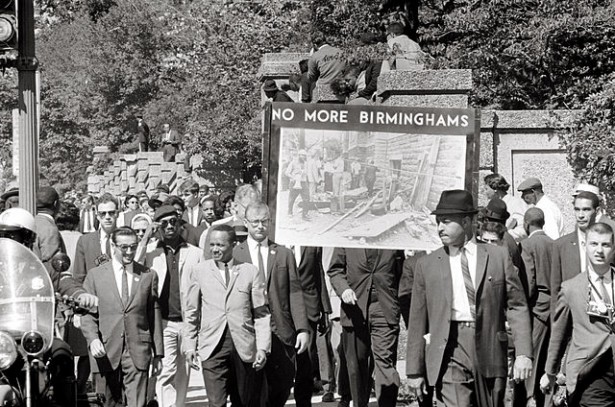 5 ways movements can handle threats and attacks
5 ways movements can handle threats and attacksThere’s another story Rev. Young tells about when he was a Methodist preacher in southwest Georgia and heard that the local Ku Klux Klan was getting excited because it looked like the civil rights movement was headed there. And so they were going to have, out in the woods, a traditional big bonfire and get all revved up to take on Black people. So what did Young do? He got a bunch of people from his congregation to go out and visit the Klan! So they did that. They went out in the woods in the dead of night, fanned out and talked in pairs with Klan members. It was the last thing the Klan expected. They effectively defanged the Klan in that locality!
The people on the right who play that kind of role today — baseball bat carriers or whatever they are — their whole deal is courage. That’s the biggest thing. And they compete with each other. Who’s braver? And so you do something that is braver than what they’re doing. I mean, it just blows them away. It’s a deterrent, and that’s what the southwest Georgia Black people did: They deterred the worst possible thing the Ku Klux Klan could do against them. And deterrence really works. Their commitment to nonviolence was what carried the day. It’s an extreme form of nonviolence to just wade into that completely without arms.
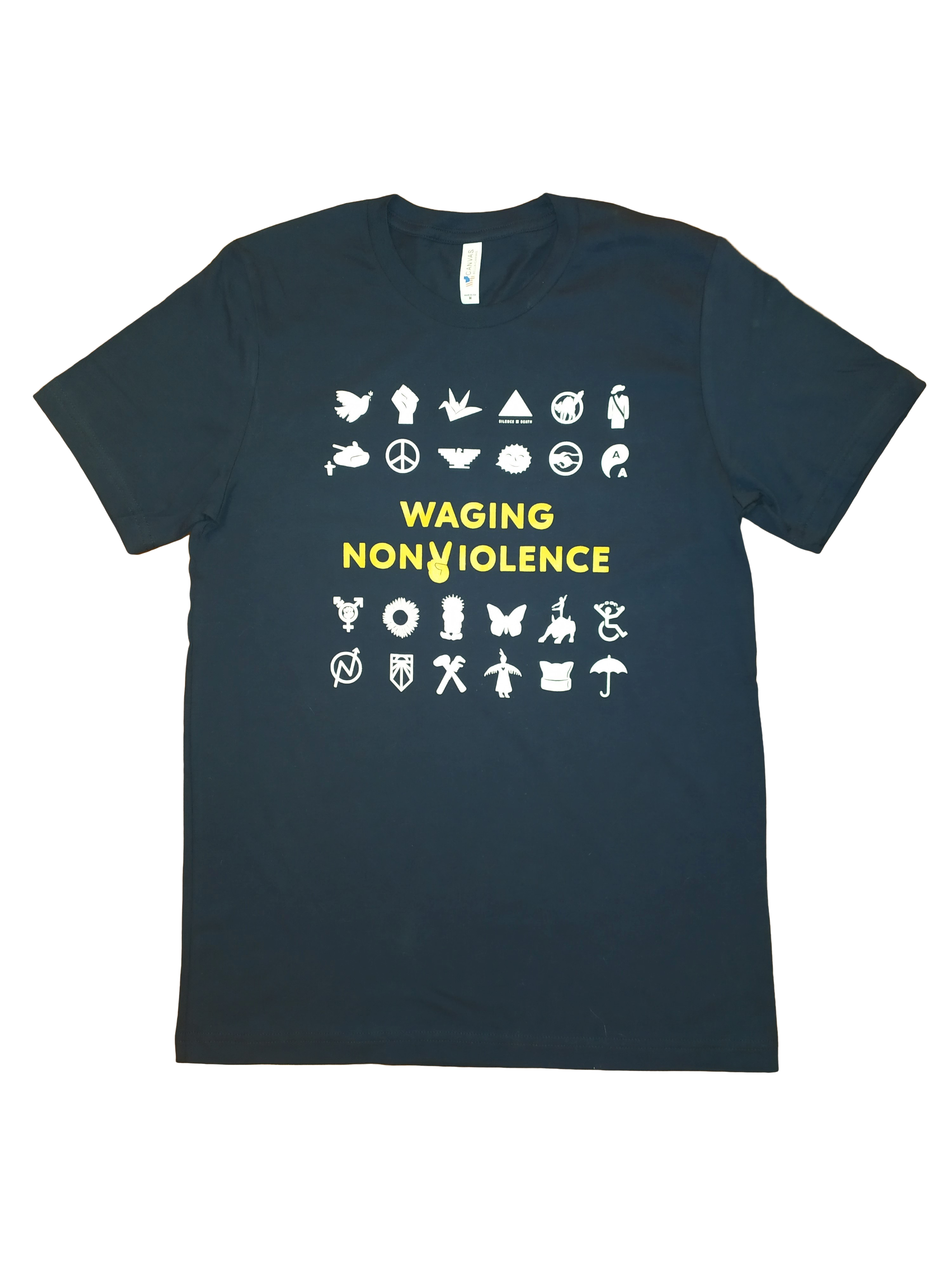
Support Us
Waging Nonviolence depends on your support. Become a sustaining member today and receive this Waging Nonviolence T-shirt!
SupportAs much as we can try to minimize risk, not every attack can be averted. So what happens when tragedy does strike? Are there ways to prepare to act in that moment?
Absolutely. Take your smartphone. Photographs and video are really important because if it’s coming anyway, then we want to make the most of it in order to stimulate more people to support us. There’s this phenomenon that some writers call backfire. Others call it paradox of repression. The idea is that our opponent’s violence works against them, by stimulating larger numbers of our people to join us. That was the secret of the civil rights movement. After violence was done to them more people would come out, again and again. And that’s happened all over the world.
After Black Lives Matter Minneapolis was attacked in 2015, they organized a huge march. They essentially doubled down and increased their level of nonviolent confrontation. That’s not something a lot of people would think of doing after being shot at.
Previous Coverage
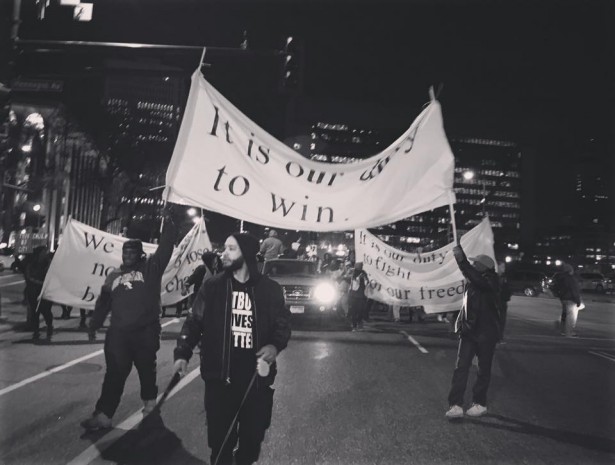 How Black Lives Matter came back stronger after white supremacist attacks
How Black Lives Matter came back stronger after white supremacist attacksThe Minneapolis BLM movement gives a fine example of strategic thinking. Strategists get inside the head of their opponent. They know the opponent uses violence to try to get us to stop our movement, from fear. So if we back off, they win. We concede that their violence is more powerful than our conviction and our belief that Black Lives Matter.
So instead we need to show them that they are wrong. They use violence — we come back stronger! We come back bigger. We won’t escalate in the sense of using violence, but instead in bigger numbers. And show even more courage. It actually pays off in terms of our reducing the chance of them continuing to oppose us, because we get stronger when they do that. This is the value of our having fun with strategy.
What about unarmed civilian peacekeeping? Can you explain what that is and how it could help in a potentially violent conflict like the election and its aftermath?
Well, as a systematic thing, it goes way back to when Gandhi was concerned about the riots that were happening between Muslims and Hindus. He would get tons of volunteers, mostly young Indians, to agree to be peacekeepers. And he would sort of deputize them, train them a little bit and say, “Get out there.” They often carried a sort of bandana, which they could either wrap around their heads or unwrap and wave to each other to indicate fighting happening on one end of a demonstration. They could move swiftly and de-escalate.
Previous Coverage
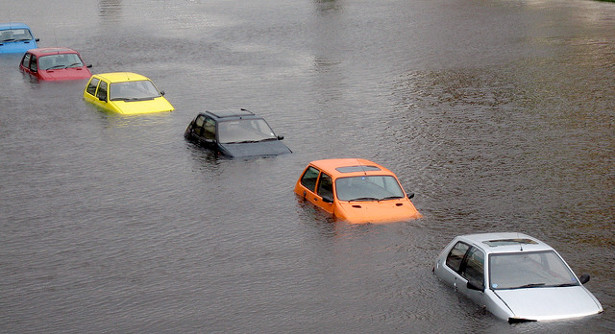 How civilian peacekeeping can help stem violent conflict on an ever-hotter planet
How civilian peacekeeping can help stem violent conflict on an ever-hotter planetThis sort of practice can be used today by protest marshals or peacekeepers. They can show their presence by something visible, like the same T-shirts or headbands or armbands. Time and again, they have reduced the risk of violence and, when it happened, reduced injury. Lately it seems that organizers of demonstrations have forgotten their value. Even the sheer presence of marshals — helping people in a march to cross the street at street corners in an organized and safe way, for example — reduces the anxiety that prompts over-reactions to threat. And because it builds the unity of the demonstrators, it makes us a more formidable presence, difficult for attackers to break apart and for the media to confuse and call “a riot.”
So be prepared go to any demonstration with a batch of armbands in your pocket, so if the organizers forgot to get marshalls, you can ask anyone you know who is thoughtful and grounded to take an armband and join you in wearing it. Tell them their “job” means no longer chatting with friends but instead keeping an eye out for trouble, hugging the margins of the demonstration where trouble is more likely to surface (and where you’re more visible), and remembering a formula or two, like “De-escalate!” “Slow down!” “Walk now!” “Sit down!” And remember that if you reach out and grab hands of people around you to isolate a violent incident, others will most likely take your hand and do the same. Crowds are so suggestible in those situations. That’s when they will pay attention to an arm band, even if they never saw you before.
There may be an impulse among activists at some demonstrations to kind of categorically reject or villainize certain sectors of society, like law enforcement or others who work to uphold the system. Why might that be unwise or even dangerous?
Previous Coverage
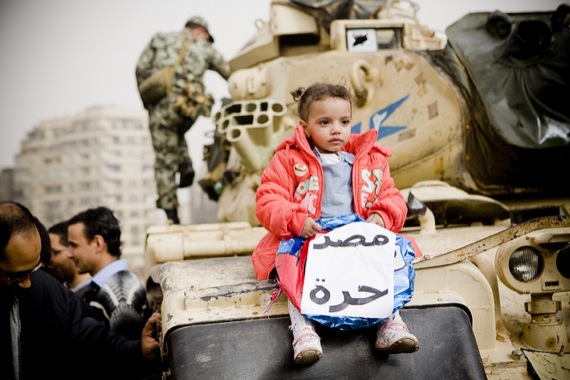 Finding allies in unlikely places
Finding allies in unlikely placesThe people who are endangering us by their threats are playing a role. And there’s always a potential difference between what people do within that role and what they are really like. And we know that in our own lives we’ve sometimes done things in a role that we later think, “Oh but that’s not me.” So we need to learn to assist people whose role is to be menacing and to hurt us, to separate themselves from that role even on the scene and say “I’m bigger than that. I’m different from that.” And that might mean lots of different changes of behavior right there on the spot. It might mean instead of hitting someone very hard, that a police officer simply goes through the motions. It might be turning their back. It might be “not seeing” something that the role says they should see. There’s all kinds of inefficiencies and ways of giving us a break that they can do when they are more than just their role.
If, on the other hand, we villainize them, what we’re really doing is freezing them to their role. We’re saying “all you are is your role.” And that’s pretty much guaranteeing that we’re going to get the worst that their role provides. So it’s definitely in our interest to [help them separate from their role].
Finally, as you’ve explained here, there are lots of ways people can train to deal with the threats and attacks that come with confronting injustice. But one of the simplest ways you’ve noted before is simply seeking out more stories — more examples of how to act in these tough situations. Why is that?
Storytelling was the main thing the Student Nonviolent Coordinating Committee’s training team was doing. I was on the training team. I was doing role plays and all that. And I was paying attention to what they were doing. And they were telling stories up the wazoo. And they always had a crowd of young, white, North college students absolutely absorbing those stories as if their lives depended on it. And, indeed, their lives may have depended on it.
A full archive of stories on nonviolence in the face of violent attack is available here.

Thank you for this wonderful material.
We need it, now more than ever.
I’m thinking about the 2019-2020 protests in Hong Kong against control by mainland China, how the peaceful and violent protestors had a kind of underlying solidarity. What new learning came from watching that coup?
Helpful suggestions! great article. Thanks George Lakey who I studied with 25 years ago in Philly. You go!
I lived in Montgomery Alabama when the thwarted march from Selma to the capital arrived. People were shocked that it actually happened. Allies were everywhere, but afraid of the consequences of joining such a risky endeavor.
My mother was a policewoman, a ‘meter maid’.Her acts were not bold or audacious. She just didn’t do what did not have to be done. Do you really have to call your supervisor? Must you report civil disobedience? Smile!
If your job is at stake, go through the motions. Gestures are important at the margins of resistance. When someone says “What could I do?” Compassionately tell them.
Thank you for sharing this information. It gives me hope and reminds me how to continue to make nonviolence my primary strategy.
These articles calmed me on a day of so much unrest for the country- voting day